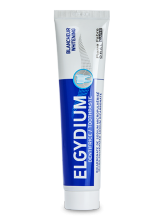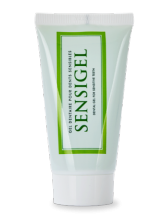Teething: helping baby get through it
How do children's teeth develop?
The first milk teeth make an appearance when a child is between three and eight months old. Exactly when the teeth erupt can vary greatly from one child to another. The first tooth generally appears before the sixth month, but it may break through earlier or later than this. Over the next two years, the twenty milk teeth will come through one after another. Milk teeth have thinner enamel than permanent teeth, and as a result are particularly susceptible to tooth decay.
What are the symptoms of teething?
When the milk teeth start to come through, your baby's gums become swollen, turn pale and slightly more ?plump?. We say that a baby is about to ?cut? their milk teeth. By running a finger over the gums, you can feel the tooth ready to come through.
When the teeth erupt, the child may become irritable and whiny, lose their appetite and their sleep may be disturbed. This is often referred to as ?teething troubles?.
Teething can also cause red cheeks and irritate the skin on the chin. Their fingers are constantly in their mouth and they chew everything they can lay their hands on. They will produce much more saliva at this point.
Some babies have loose stools or run a high temperature during teething, but this may be coincidental as such complaints are common at this age, and there is no proof of a real link with teething.
Do all children suffer when their milk teeth come through?
There is no level playing field when it comes to teething sensitivity: every child reacts differently, and some do not seem to experience much discomfort. It comes down to the individual, and may be hereditary.
However, in any case, teething-related discomfort is not unavoidable. There are solutions that can provide real relief.
How to relieve teething troubles
1. Apply a soothing and calming gum gel
To relieve a painful teething episode, you can rub your baby's gums with a gingival massage gel for babies, such as Pansoral Teething gel: apply a pea-sized amount of gel with a clean finger by lightly massaging, three or four times a day. With its camomile and marsh mallow extracts, Pansoral Teething gel will gently help your baby get through the discomfort.
2. Give them a teething ring
A flexible teething ring allows the child to cut their teeth without injuring their gums. Some can be cooled in the refrigerator beforehand, for slight pain-relief. Caution! NEVER place them in the freezer, as this risks causing burns to the gums, lips and tongue!


